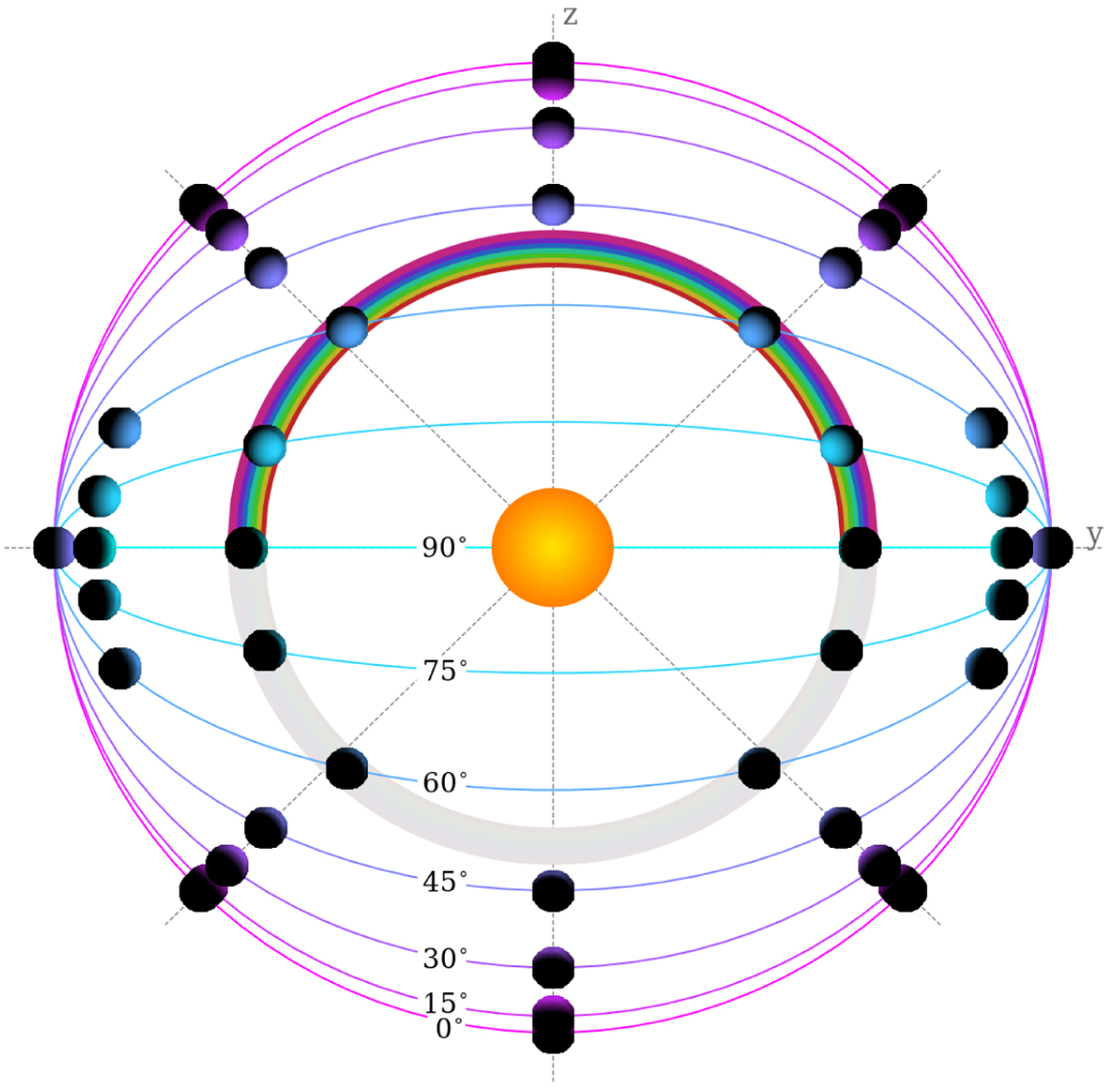Fig. 2

Download original image
Planetary orbits with inclination angles i ranging from 0° to 90°. The lower half of the figure is closest to the observer (we thus define i as the angle between the orbit normal and the vector to the observer). Each planetary system is defined with respect to a Cartesian coordinate system (x, y, z), with the x-axis pointing toward the observer, and the y- and z-axis as shown. Points where the planets have the same phase angle, α (defined as the angle between the vectors from the planet toward the star and the observer), form circles, because they lie on a cone with a tip-angle equal to α and also on a sphere with the radius of the (circular) orbits. The rainbow is thus a semicircle, since it is the intersection at α = 38°. The color sequence of the rainbow is reversed compared to the rainbow that forms in rain droplets (Karalidi et al. 2012). Planets are shown at the eight locations where we assume observations would be taken.
Current usage metrics show cumulative count of Article Views (full-text article views including HTML views, PDF and ePub downloads, according to the available data) and Abstracts Views on Vision4Press platform.
Data correspond to usage on the plateform after 2015. The current usage metrics is available 48-96 hours after online publication and is updated daily on week days.
Initial download of the metrics may take a while.


